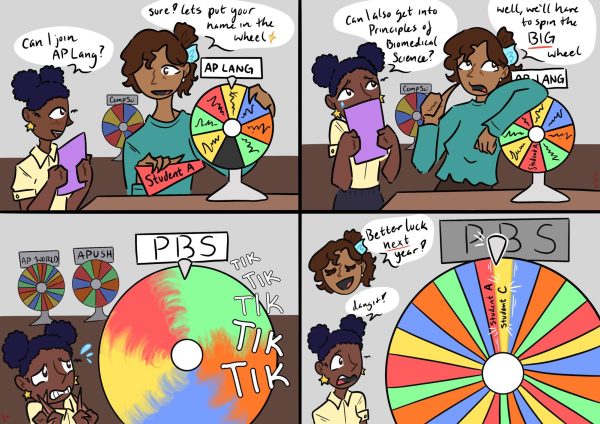Wasteful use of plastic at school must stop
The way school lunch is packaged wastes an unnecessary amount of plastic.
Almost every food item is packaged in single use plastic wrappers or containers. Packaging that is soiled with food cannot be recycled, according to the US Environmental Protection Agency. When thousands of students eat school food on a daily basis, it adds up to a large amount of plastic in the trash, set to destroy our environment.
But San Ramon Valley Unified School District can mitigate our enormous plastic footprint.
Truly reducing our plastic waste will require a total overhaul of the school lunch system into one where we would utilize fresh cooked food and reusable crockery and utensils.
Unfortunately, this goal is unrealistic in the short term for a program that will not have a kitchen or even sinks until next year, and that has had to meet a 300 percent demand increase for food compared to previous years, said Zetta Reicker, the district’s director of child nutrition. But there are many actions the district can take to reduce its plastic footprint in other ways while it works toward that goal.
For instance, the district can prioritize biodegradable and compostable food packaging in its bid specifications. The district creates contracts with food companies by setting criteria for the food products it wants and allowing the companies to submit bids. The district then evaluates those bids based on price and how well the company fits the district’s needs.
Bid specifications for foods are already particular. Pizza, for example, is required to have at least 51 percent whole-grain flour. Implementing packaging requirements for biodegradable wrappers would be simple in comparison.
The initial expenses for this switch would be fruitful, especially since the district lacks a composting program. Creating a district recycling program to handle biodegradable waste will serve benefits beyond handling lunch waste. Moving toward packaging that breaks down will mean creating waste that only lingers for a few years.
Some foods served also use plastic needlessly. Individually packaged baby carrots could easily be scooped out in a salad-bar fashion. The district should look for produce bids that follow more sustainable models like this.
The cutlery is also wasteful. Sporks are separately packaged with napkins and tiny straws that are so small they are usually disposed of. The individual wrappers are nonsensical. Sporks and napkins could be provided by separate dispensers that could easily prevent additional wasteful use of plastic.
Students can’t boycott wrappers when we need to eat the food inside them, and we don’t have the power to change the rules. But the district has a chance to make a significant difference in the amount of plastic we waste by taking some of these steps in the future.

